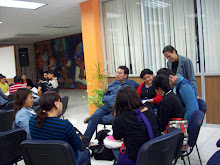
Women in Science
Kadence Buchanan
More than 25 years have gone by since the U.S. Congress passed the Women in Science and Technology Equal Opportunity Act, which states that it is "the policy of the United States that men and women have equal opportunity in education, training, and employment in scientific and technical fields." But today's academic field illustrates a different reality than that the U.S. Congress wishes to exist. Even if major advances have occurred in relation to women's role in education, academic institutions are still not fully utilizing the pool of women scientists they are producing each year. In fact, the difference between the proportions of women who earn Ph.D.'s and those who are in faculty positions at top universities appears to be most evident in the biological and physical sciences, as well as in engineering.
But these sciences, even if they have been mostly studied by men, have been also studied in great extend by women over the years. While some scholars support that considerable biological differences between men and women affect their representation in science, there is a substantive body of evidence indicating that overall intelligence does not differ between men and women. Still controversy persists as to whether specific aspects of cognitive ability differ. But there is no ideal constellation of cognitive abilities required to be a scientist. To become a successful scientist, one needs to have deductive reasoning abilities, adequate verbal skills, quantitative reasoning, intuition, and social skills. Even if we accept that men and women differ in some of these abilities, there is no basis on which one may assume that men will have greater success than women in science, because different academic backgrounds, personal skills and mental abilities create equally successful approaches and styles. Moreover, there is no convincing evidence that women's representation in science is limited by innate ability. For example, between 1970 and 2003 a considerable 30 percent increase occurred in the proportion of Ph.D.'s granted to women in engineering. Since people support that this was the outcome of dramatic changes in attitudes and laws relevant to gender, the fact that more women were able to successfully graduate from their PhD's programs provides strong evidence of the cultural and structural impediments to women.
Moral and legal imperatives to ensure equal opportunity provide sufficient reasons to examine the causes of the disparities and to attempt to rectify them. Equally compelling is the impact that equity will have on the quality of today's universities and the competitiveness of any nation. Heterogeneity among students, faculty, and staff can strengthen universities' role in fundamental ways. Specifically, the design of more innovative solutions to problems is the outcome of heteroclite groups, which can bring a higher level of critical analysis to decisions. Furthermore, institutions that welcome women foster more favorable working environments for all community members.
Concluding, institutional transformation necessitates collective examination of attitudes and the behaviors observed, which can be rather disquieting, since it requires engagement with issues of life-style, reproduction, hiring, and academic customs. But, the most uncomfortable of every possible discovery is the realization that all people have their own unconscious biases, which can shape behavior patterns and lead to such gaps.
Kadence Buchanan writes articles on many topics including Women's World, Science, and Nursing.








No comments:
Post a Comment